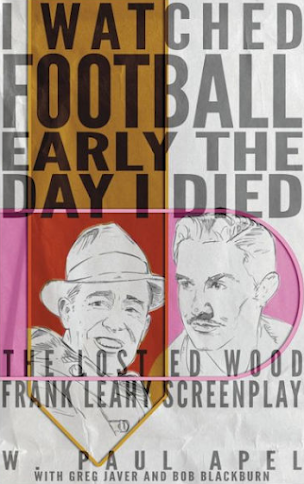 |
| Ed Wood, Criswell, and Paul Marco on the set of Plan 9. It appears to be Jeff and Paula's patio. |
Alas, I did not grow up with Famous Monsters of Filmland. Never stashed copies under my bed or affixed pictures from it to my bedroom wall. By the '80s and '90s, when I was becoming a dedicated film freak, that legendary horror fan magazine—founded by publisher James Warren and editor Forrest J. Ackerman in 1958—had been nudged aside by competitors like Fangoria and Cinefantastique on the newsstands. But Famous Monsters played an important role in shaping the tastes of a whole generation of viewers, and it even helped create the cult around director Edward D. Wood, Jr. It's safe to say that this entire series of articles would not even exist had it not been for Ackerman and his much-beloved magazine.
 |
| Famous Monsters of Filmland #201 |
We may think of the Wood cult springing up practically overnight in 1980 with the publication of The Golden Turkey Awards by Harry and Michael Medved. That was where Eddie was infamously named the worst director of all time and Plan 9 from Outer Space (1957) the worst film. But the Medveds had no idea who Ed Wood was before they wrote Golden Turkey. Readers of the brothers' previous book, The Fifty Worst Films of All-Time (1978), had hipped them to Eddie and his films. They, in turn, had learned about Eddie from Famous Monsters and other horror fan magazines that sprang up in its wake, like Castle of Frankenstein.
Forrest J. Ackerman (1916-2008) was a pivotal figure not just in Ed Wood history but in horror history in general. To some folks, he's their lovable "Uncle Forry," the man who got them interested in sci-fi and horror in the first place. Or at least the grownup mentor who took their already-burgeoning interest in the bizarre and encouraged it until it became an obsession. Famous Monsters of Filmland came around at a time when classic horror films of the 1930s and '40s, including those from Universal starring Bela Lugosi and Boris Karloff, were finding new viewers thanks to television. Many of these viewers were children, and Ackerman described the target audience for Famous Monsters as "11½ year old boys" who were "pre-girl [and] pro-ghoul."
Ed Wood was considerably out of that age range by 1958, but he had an abiding love for classic horror and never really lost his childlike mindset. His own wife, Kathy, described him as "such a kid" in Rudolph Grey's Nightmare of Ecstasy (1992). So it's only natural that Eddie would gravitate to Famous Monsters and to Forry Ackerman himself. But the magazine editor seemed to have little use for Wood, whom he considered a nuisance. This quote from Nightmare typifies their relationship:
At Eddie's request, Ackerman reluctantly served as Ed's literary agent (or "illiterary agent") for a time in the 1960s and provided an introduction for the Orgy of the Dead novelization. Other than that, though, their partnership yielded little. A 1966 letter that Ed Wood wrote to Forrest J. Ackerman suggests that the Famous Monsters editor was intentionally ducking Eddie. Over time, as Eddie was subsumed by alcohol and pornography, he and Forry drifted apart. Any chance of a reconciliation disappeared with Ed's death in 1978.
By the 1980s, with Ed a posthumous quasi-celebrity from The Golden Turkey Awards, Forrest J. Ackerman had seemingly revised his opinion of the Plan 9 director. In 1986, Forry hosted Lugosi: The Forgotten King, a documentary that acknowledges Lugosi's work with Ed Wood but does not revel in the campiness or "badness" of these films. In the autumn of 1993—about midway between the publication of Nightmare of Ecstasy and the premiere of Tim Burton's lavish biopic Ed Wood (1994)—Ackerman devoted ten full pages of Famous Monsters of Filmland #201 to Eddie. Again, I thank Wood fan Jamie Teel for posting those pages to Facebook recently.
Besides the short story "Gemeni," which I reviewed last week, Famous Monsters #201 included an article called "Taking Stock of Wood" by Mark Patrick Carducci, director of the Wood documentary Flying Saucers Over Hollywood (1992). (I'd love to say this was a cover story, but the great Vincent Price is actually featured on the cover of Famous Monsters #201.) Besides being a major Ed Wood fan, Carducci was an accomplished horror screenwriter whose credits include Neon Maniacs (1986), Pumpkinhead (1988), and a made-for-TV movie called Buried Alive (1990) directed by Frank Darabont.
Because Famous Monsters is a family-friendly publication, "Taking Stock" is a very gentle and generic overview of Wood's career that skips over most of the scandalous stuff (e.g. alcoholism, pornography) and sticks to the highlights. All the usual suspects are here: Orson Welles, Christine Jorgensen, Bela Lugosi, the rubber octopus, Tor Johnson, The Golden Turkey Awards, Bela's chiropractor, Vampira, Criswell, Tim Burton, etc. If you're still reading this blog post, you know all this stuff already. What's notable about Carducci's article is that it comes in the wake of Nightmare of Ecstasy when the public view of Ed Wood was becoming more sympathetic. Carducci calls Ed "infamous" but "tragically desperate" and says that his reputation as the worst director of all time is "somewhat" undeserved. Hey, that's a start.
P.S. There's a neat little detail in this magazine that I neglected to mention in last week's article. At the end of "Gemeni," Ed Wood includes his home address: 3300 Riverside Drive, Apartment 2-E, Burbank California. A few years ago, Bob Blackburn sent me a list of the addresses where Ed and Kathy Wood lived from the 1950s to the 1970s. The Riverside Drive location is a long-gone apartment complex near Warner Bros. That space is now occupied by an institution called the New York Film Academy Burbank. I hope Ed's ghost haunts it. Bob lists Riverside Drive as one of Eddie's addresses from the 1950s, so "Gemeni" may be even older than I thought.











